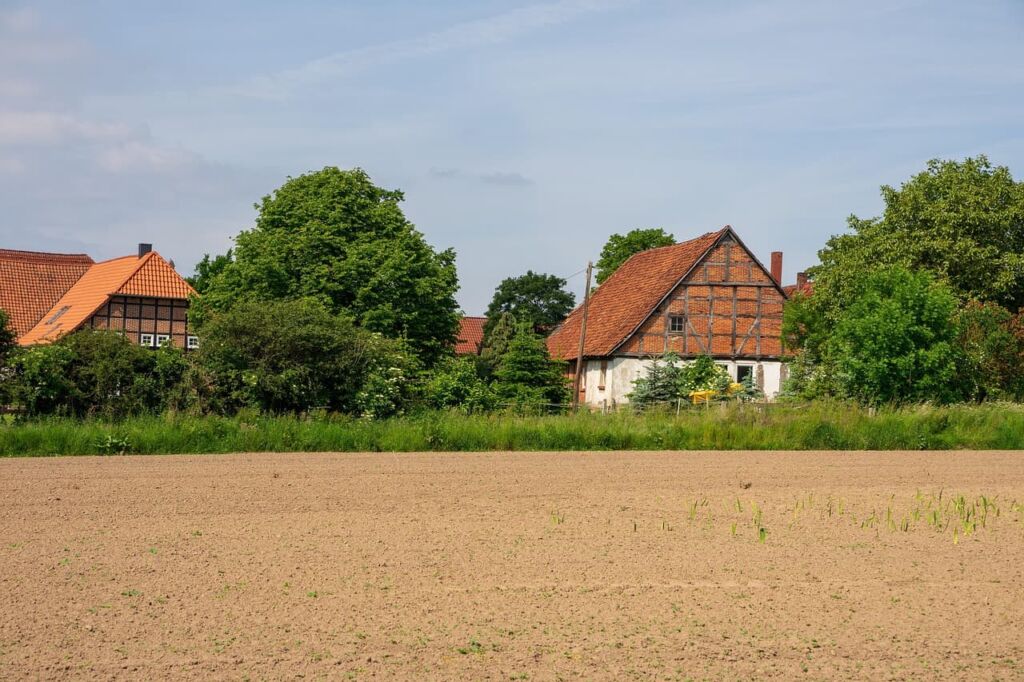Through land banks, prospective buyers have an opportunity to obtain properties, usually in a state of neglect, through government or nonprofit organizations at a fraction of the price. The aim of land banks is to improve neighborhood stability and community development by reclaiming vacant, tax-delinquent, or abandoned properties.
For investors, prospective homeowners, and community developers, acquiring land bank properties can be a swift and strategic means of obtaining real estate at a substantially lower cost.
Buying from a land bank is quite different from traditional real estate listings. It is a unique process that is more challenging in that it requires extensive due diligence, patience, and compliance with certain redevelopment renovation objectives. The process is also likely to vary greatly from one land bank to another because of the governance and rules set by the city or county where the land bank is situated.
Despite these challenges, purchasing a property from a land bank can provide great investment returns or serve as a revitalizing force for community development.
This guide explains everything from understanding land banks to their application processes and closing on the property.
The Purpose of Land Banks
A land bank is a public or non-profit organization that focuses on the acquisition, management, and rehabilitation of vacant or abandoned properties. Land banks address issues relating to affordable housing and blight while also helping to mitigate the effects that neglected real estate has on cities.
Most abandoned properties were obtained through tax foreclosure, abandonment, or enforced legal code compliance. Because of bureaucratic stagnation, these properties sit abandoned for a long time, putting the surrounding real estate at risk of devaluation and creating safety hazards.
In collaboration with municipalities and community organizations, land banks seek to develop these parcels into community gardens, new housing developments, commercial centers, or owner-occupied homes.
Land banks exist in various states, including Michigan, Ohio, New York, and Georgia. Each land bank is governed by its own set of rules. Some focus on issuing contracts to nonprofits or developers for specific strategic improvement projects, while others have initiatives for those interested in purchasing side lots or homes to fix and sell.
One can purchase a property through a land bank for a few hundred dollars. That said, most buyers will need to be ready to improve, maintain, or redevelop the property within a certain timeframe.
Establishing Eligibility to Purchase
Not everyone can purchase land bank property. Different land banks have different criteria for eligible buyers. These are usually designed to ensure that the buyers are capable of managing the properties and improving value.
Like any other purchase, transactions involving land bank property have to meet a few criteria. Buyers physically cannot have any outstanding code infractions within the area or delinquent taxes. In addition, the buyers will need to be clear with local government agencies as well as with utility companies.
Applicants with vacant or derelict buildings may also be disqualified. Most importantly, prospective buyers will need to have a plan for how they are going to use the property, whether by constructing a new home, expanding an existing yard, or launching community projects.
Some land banks prioritize owner-occupants or non-profit organizations and limit participation to investors only. Other permits participation from developers and landlords, but only in certain designated revitalization areas. Land bank’s criteria are local, so eligible applicants must look them up and gather proof documents.
In nearly all instances, proof of identity and income is required, along with a short description of how the property is going to be used, making this form of purchasing quite straightforward.
Searching for the Right Land to Buy
Now that you are ready to apply, the next thing is to explore the land bank inventory. Most land banks have websites where they display their current inventory, often organized by neighborhood, property type, or status.
Available properties include vacant lots or homes that require significant repair work. Some lots might be designated for residential construction, while others could be zoned for commercial or mixed-use developments. While property sizes and costs vary, most properties are available at a lower price compared to traditional listings.
As you sift through the listings, the following factors should be kept at the forefront:
- The zoning status of the property
- Estimated redevelopment timelines
- Surrounding area and locational context
- Known limitations, restrictions, or covenants
- Provision for utilities or access roads
If it is within your means, physically inspecting the land is highly encouraged. Many land bank parcels are sold “as-is,” which means the buyer has to deal with cleanup, permits, and any violations of codes that are burdensome.
Certain land banks offer side lot programs that allow homeowners to purchase adjacent vacant lots for a specified fee. This is most beneficial for people living in the suburbs or urban areas who want to develop gardens, extend their yards, or preserve open spaces.

Creating Your Application and Proposal
In many instances, land bank purchases are not as simple as presenting a cash offer. Most land banks require an applicant to outline their intended use and planned improvements to the property in a detailed proposal. This step is critical because it determines whether an applicant receives approval from the land bank, and it assists land banks in estimating the prospective carrying value of the property.
These documents may serve as the basis for a standard application:
- Filled-in application template
- Eligibility documents (ID and tax clearance)
- Detailed written strategy for property enhancement and maintenance
- Change or construction timeline with major milestones noted
- Preliminary cost analysis
- Documentation substantiating available funding
More valuable properties may attract additional requirements, such as architectural plans, scopes of work, renovation outlines, and business proposals. In contrast, side lots and small parcels can be easily obtained with a brief written strategy.
The review boards at land banks will evaluate received proposals based on their viability, community impact, applicant’s qualifications, and community redevelopment objectives. The best applications are usually from buyers who show goodwill through active participation in property improvement and community development.
Steps to Take After Your Application Submission
Each land bank has its own processes and workflows, meaning that application submission is not uniformly handled across all land banks. In some areas, there are small committees that hold monthly review sessions to assess applications. Other areas may have public hearings or require a decision from a local governance body.
Application review could take from a few weeks to several months. During this time, the land bank may contact the applicant to clarify questions or request additional documents.
During the review phase, applicants are evaluated on multiple important criteria, including the outlined redevelopment plan and its feasibility, financing, and historical ownership performance in complying with codes. Reviewers are also concerned about how the proposed redevelopment will serve the immediate neighborhood and its alignment with community development objectives.
In situations where multiple applicants are interested in a single plot of land, the land bank may prioritize those who are willing to settle on the land or those who would create the most value to the region.
Upon receiving the indicators of eligibility, along with necessary documents outlining purchase terms, redevelopment plans, and transfer timelines, a formal letter of acceptance is issued.
Purchase Finalization and Deal Closure
This is where the summary of the contract is presented to the buyer for signature. The final step is signing the purchase contract. Following the deal, the buyer gets all the stipulated documents. All steps are conducted via a title company affiliated with the land bank or one of its legal partners.
Alongside the purchased contract, a detailed set of documents outlining obligations and responsibilities is also provided. This set will include, among others, the total amount due, any redevelopment or maintenance obligations related to the property, and timelines for achieving the defined improvement milestones.
Moreover, the land bank is secured against breaches of contract by imposition of penalties for non-compliance.
These penalties incorporate reversion clauses that give the land bank the option to reclaim the property if the outlined conditions are not met.
Tax-foreclosed or abandoned properties have a history that is often fraught with disputes. To counter this, land banks may offer quiet title actions or clean title guarantees as part of the sale. This ensures that no past claims or liens will be brought forth, which would hinder the property’s use.
Even though buyers do not incur traditional closing costs, they must pay for the drafting of legal documents, recording fees, and other required permits. In many instances, just after a purchase is closed, land banks will issue a deed to the buyer, completing the transfer and formalizing ownership.
As soon as you take possession of the property, the timeline for redevelopment begins. Most land banks impose a deadline for when work needs to start, and some may even perform voluntary inspections to make sure those deadlines are being met.
Moving The Property Toward Becoming A Useful Investment
After the closing date, your main focus should be on implementing your improvement strategy. This may involve building a house, planting a garden, or modernizing an existing building. Changes made to the property must be consistent with the plans that were presented.
Improvement time frames usually take from six months to two years, depending on the project details. In the worst case, failing to execute your plan may result in financial penalties, termination of the project, or loss of ownership.
Unlocking value over time is possible with successful redevelopment. While some buyers change their land bank properties into rental homes, small businesses, or long-term investments, others reserve the properties for personal use or community-benefiting projects.
In many cities, land bank redevelopment supports stimulus neighborhood revitalization. Your project can raise property values, reduce blight, attract new development, and stimulate community enhancement.
Things to Be Concerned About
Though land bank properties may offer outstanding bargains, there are challenges that buyers must pay attention to. With land bank properties, buyers are in for a unique set of red tape, unlike traditional real estate, longer wait times, and more work.
Some usual issues are incomplete and out-of-date records that complicate confirming ownership history and previous uses of land. There are also possible environmental concerns, such as soil contamination, which may require some testing or clean-up work. Another time-consuming step is title clearing, especially when there are numerous legal complications or unresolved liens on the property.
Land banks often have rigid requirements for redevelopment, and inspections may be necessary to ensure the buyer is making the changes outlined in the purchase agreement. Financing is often difficult, as many traditional lenders do not loan against land bank properties, particularly vacant or severely distressed ones.
This kind of purchase requires an understanding of local permitting, zoning, and construction approvals, which vary greatly by jurisdiction. Engagements with local real estate lawyers, architects, or community development organizations can help streamline this process. Ultimately, the best land bank buyers view the purchase as a long-term investment and proceed through each stage in a carefully planned, methodical way, demonstrating patience and a willingness to work alongside municipal planners.
Ready to Start Your Land Bank Adventure?
When you wish to buy land from a land bank, The Land Method is available to guide you through every step from application to successful redevelopment. Don’t let this opportunity pass you by to invest in an under-valued property. Whether you are building a new home, starting a community project, or taking advantage of a real estate opportunity, we’re here to assist you.

Conclusion
Acquiring land from a land bank is an incredible opportunity to purchase real estate at a low price while simultaneously servicing the community. With land banks, investors, homeowners, non-profits, and developers looking to purchase land are always provided with easier access to affordable properties.
To submit more than just a bid, it is essential to have a comprehensive strategy, eligibility documentation, and a willingness to follow through with the tracked obligations. Those who are willing to take these additional procedures will reap the rewards of enhanced long-term property ownership and value while also aiding in neighborhood revitalization.
Owning property is a remarkable venture to embark on. Despite land banks operating differently from each other, there are multiple routes one can take to navigate this journey.
Frequently Asked Questions
Is anyone eligible to buy land bank property?
Not really. Many land banks expect buyers to be fully up to date on taxes owed and have no outstanding code violations. Some land banks have a preference for homeowners and nonprofits over investors.
Do I need to live in the city where the property is located?
Not in every case. Some land banks have a preference for local owner-residents, while many others still cater to out-of-town buyers, particularly those with good redevelopment plans.
How much does a property from a land bank sell for?
A more comprehensive answer cannot be provided as pricing varies widely, however, lots and derelict structures usually sell for hundreds to thousands. Moreover, there is often a lot of hidden redevelopment spending that gets overlooked during budgeting.
Are traditional mortgages accepted for purchasing a land bank property?
Traditional loans and mortgages are scarce for these properties, but cash, personal loans, and grants are perfectly fine. Some land banks also offer financing to qualifying prospective buyers.
Will I get penalized if I do not comply with my stated redevelopment plan?
Most land banks include compliance clauses in the sales agreement. Thus, if you do not fulfill conditions or milestones by set dates, you will face some form of repercussions or lose the property.
Ginis Garcia is a seasoned real estate investor with over 14 years of experience helping both new and experienced investors achieve their goals in the housing and land markets.
- Ginis Garciahttps://thelandmethod.com/author/thelandmethod/
- Ginis Garciahttps://thelandmethod.com/author/thelandmethod/
- Ginis Garciahttps://thelandmethod.com/author/thelandmethod/
- Ginis Garciahttps://thelandmethod.com/author/thelandmethod/


